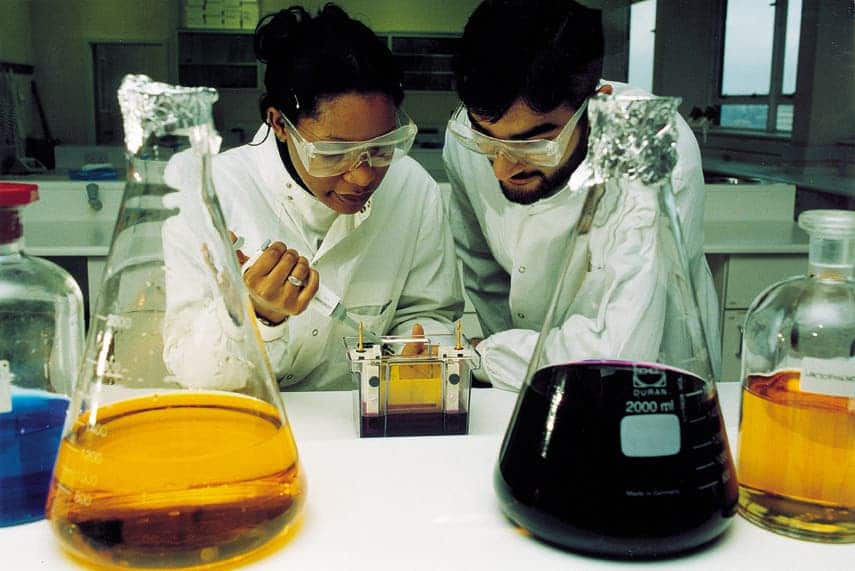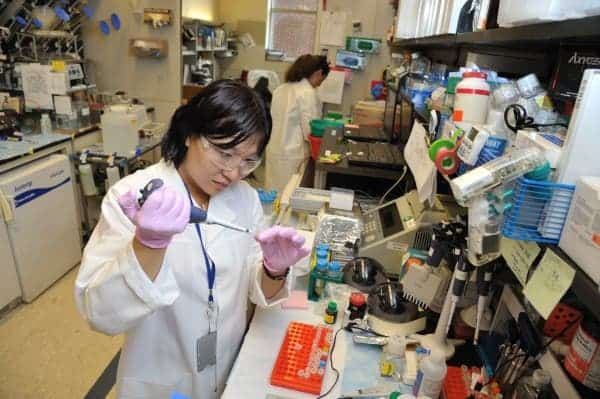America’s young scientists are constantly losing the battle to receive more funding. They’re losing research dollars, leaving research altogether and creating a brain drain which puts a big question mark regarding the future of science.

If you’ve worked in research or you know someone who does, then you’ve probably heard this a million times – there’s not enough money, it’s harder and harder to get money, I can’t get my ideas funded. Research funding has underwent a steady decline for the past couple of decades, and things don’t seem to brighten up any time soon.
A new research found that the proportion of principal investigators with a leading National Institutes of Health grant who are 36 years old or younger dropped from 18 percent in 1983 to 3 percent in 2010. Furthermore, the average age at which a scientist with a medical degree gets her first of these grants has risen from just under 38 years old in 1980 to more than 45 in 2013.
“The implications of these data for our young scientists are arresting,” Johns Hopkins University President Ronald J. Daniels writes in the PNAS paper. “Without their own funding, young researchers are prevented from starting their own laboratories, pursuing their own research, and advancing their own careers in academic science. It is not surprising that many of our youngest minds are choosing to leave their positions.”
This leads to one thing – young, and often talented researchers are leaving the field and moving on to the private sector or abroad… or simply doing something else. If this continues, then the very future of research in the US can be cast into doubt. With fewer money and fewer gifted researchers out there, how can we expect great results?
Daniels points out three main reasons why this is happening – longer training periods, a grant system which favors older researchers and an increase in the cost of research that is borne by universities, causing some institutions to shy away from unproven researchers in favor of scientists with established funding streams.
“The inability to staunch — if not reverse — the above trends stands as an urgent and compelling policy challenge,” Daniels says. “The current stewards of the U.S. research enterprise bear a responsibility to sustain and safeguard that enterprise so that it can provide a platform for the scientists and the science of generations to come.”

Also, while this study has been published on biomedical researchers, the situation is pretty much the same in all fields – but more so in the US than in other parts. Other countries have, on the contrary – accelerated their investments into researchers.
“Other countries are marshaling the will and resources to invest in the next generation of young scientists,” Daniels says. “A comparable solution in the United States will require a comparable commitment on the part of all actors in the biomedical science ecosystem. … Our next generation of scientists, and indeed our next generation of science, demands nothing less.”
Indeed, a separate study has found that US has been cutting medical research funding every year since 2004
The same can’t be said for the rest of the world, as global investment in biomedical research actually increased during that same period, according to a study published today in the Journal of the American Medical Association.
“The United States is at risk of losing its global scientific leadership and competitiveness,” write Victor Dzau and Harvey Fineberg, current and past presidents of the Institute of Medicine of the National Academies in Washington, DC, in an editorial also published today in the Journal of the American Medical Association. “One indicator after another demonstrates numerous other countries outpacing the United States in their commitment to research.”
Patents and copyrights in the US are also in decline. For example, the US contributed 57 percent of the world’s life science patents in 1981, and now contributes 51 percent. And of the patents considered most valuable, the US contributed 73 percent in 1981. In 2011, however, that number was 59 percent.
“We view this as a cloud on the horizon,” Moses says. “As Asia and other countries patent more and the quality of those patents are greater, the threat to the US supremacy is real.”
I’m not sure where this problem actually stems from – if it’s from Congressmen denying funding from researchers, if it’s universities not fostering their talents good enough, or if it’s just the system falling apart. But one thing’s for sure: if the US wants to stay at the top of global research, they have to invest more, especially in rising scientists.
Journal Reference:
- Ronald J. Daniels. A generation at risk: Young investigators and the future of the biomedical workforce. Proceedings of the National Academy of Sciences, 2015; 201418761 DOI: 10.1073/pnas.1418761112
- Hamilton Moses III et al. The Anatomy of Medical Research – US and International Comparisons. JAMA. 2015;313(2):174-189. doi:10.1001/jama.2014.15939.


